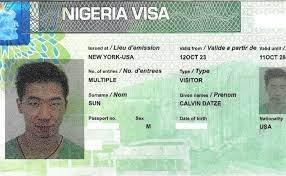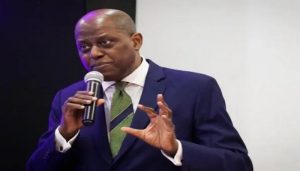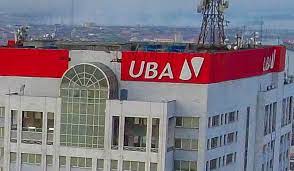
As fuel prices continue to skyrocket, Lagosians are being forced to adopt new strategies to manage the increasing costs of commuting.
One such strategy is turning off car air conditioning to save on fuel consumption.
For Oluwatosin, a Lagos resident who regularly drives from the Mainland to the Island, the soaring price of petrol has made even small comforts like using his car’s AC an unaffordable luxury.
“The truth is, no matter your income, the fuel hike hits everyone’s pocket hard,” he explained.
“Fuel prices affect everything—food, transportation, and daily commodities. Personally, my expenses have skyrocketed, cutting deep into my income and savings.”
With petrol prices now exceeding N850 per litre at NNPC stations and as high as N1,100 at other retail outlets, Oluwatosin’s daily commute, which used to cost around N10,000 using his car, now demands almost double that amount.
“I can’t even turn on my AC anymore,”he admits, highlighting the drastic measures Lagosians like himself are resorting to in order to cope with the surge in fuel prices.
From switching off car ACs to cutting down on unnecessary trips and exploring more fuel-efficient modes of transportation, Lagos residents are finding creative ways to navigate the financial burden of soaring fuel costs.
On May 29, 2023, President Bola Tinubu, in his inaugural speech, announced the removal of Nigeria’s long-standing fuel subsidy, citing dwindling resources and the need to redirect funds toward infrastructure, healthcare, and job creation.
This move immediately triggered a surge in petrol prices, rising from around N195 to over N617 per litre—a 216% increase by mid-2023.
Despite the subsidy removal, fuel shortages persisted, pushing prices even higher by July and August 2024, with rates ranging from N800 to N900 per litre.
The shortages were linked to the Nigerian National Petroleum Corporation’s (NNPC) debts to international oil traders, a consequence of the subsidy removal.
Though NNPC initially denied the claims, it later acknowledged that these debts were a significant factor in the ongoing fuel crisis, with insiders estimating the owed amount at $6.8 billion.
By early September 2024, NNPC stations in Lagos raised prices to N855 per litre, with some outlets selling as high as N897, while independent stations charged between N1,000 and N1,100 per litre across Lagos, with higher rates in other regions.
As fuel prices in Lagos stabilize between N890 and N1,100 per litre, car owners are rethinking their daily commutes. Oluwatosin, for example, now spends nearly double on fuel for his trips from the mainland to the island, and other drivers face similar financial strains, prompting changes in transportation habits.
A Lagos resident in her mid-50s, living in an exclusive estate in Orisunmbare, Alimosho, shared how the rising cost of petrol has impacted her daily routine.
Speaking to this medium anonymously, she explained how her air cargo freight business requires frequent trips between Orisunmbare and Ikeja’s local airport, in addition to school runs for her two children, aged 2 ½ and 6.
Previously, when fuel was N650 to N680 per litre, filling the 80-litre tank of her Lexus RX 300 cost N52,000 to N56,000. Now, with prices at N1,100 per litre at non-NNPC stations, she spends around N88,000.
To cope, she has reduced her trips to the office from daily to every other day, relying on her company’s internal system.
Despite the high costs, she has no plans to switch to public transport, citing her age and children: “I’ve gotten used to the convenience of my car.”
Lagos lawyer Kingsley Adrian Banks has also seen a significant rise in his fuel expenses since the removal of the fuel subsidy in mid-2023. Before, he spent between N6,000 and N10,000 per fuel stop, enough for several days of commuting.
Now, with fuel prices at N1,100 per litre, he budgets around N15,000 per visit.
“I’ve had to cut down on how much I spend on fuel,” he explained.
Kingsley now relies on public transport, including Keke Napep, danfo buses, and ride-hailing services. “Public transport has become a little more expensive now, but it’s still cheaper than driving all the time.”
Yet, the shift has its drawbacks: “Waiting at bus stops, crowded buses, and security concerns—it’s not convenient, but sometimes I don’t have a choice.”
Despite these challenges, he continues to alternate between driving and public transport, admitting, “If public transport in Lagos was more efficient, I’d probably use it more.”
Another Lagos resident, who lives in Ogba and works in Ikeja, has fully switched to public transport due to rising fuel costs.
Speaking anonymously, he said, “I’m considering switching to public transport options to save cost. In fact, I have switched.”
With fuel prices surge, public transport is now the more economical option. He only drives when necessary, such as for family outings, rainy days, or when transporting heavy items.
“I will only drive when it’s very important,” he explained.
For him, switching to public transport has been a practical solution in light of soaring fuel prices.
Lagos offers various public transportation options, including BRT buses, danfos (yellow buses), Keke Napep (tricycles), Korope (mini buses), ride-hailing services, and the new light rail system.
The Lagos Blue Line Phase 1, running from Marina to Mile 2, cuts travel time to around 21 minutes, though limited stations can be inconvenient. The Red Line, with phase 1 running from Oyingbo to Agbado, is set to begin operations soon.
Danfos, the most common option, are affordable with fares ranging from N300 to N800 but face challenges like overcrowding and frequent stops.
Bus Rapid Transit (BRT buses), operating on dedicated lanes, offer quicker travel with fares between N500 and N750, though they too suffer from overcrowding and long wait times at the various terminals.
Keke Napep is used for short trips, while Korope minibuses serve shorter distances, both offering cheaper fares.
Ride-hailing services such as Uber and Bolt provide more comfort, starting at around N1,000, but are costlier. Ferries also connect areas like Ikorodu and Victoria Island, though their routes are limited.
For many Lagos residents, the decision between using private cars or public transport is a balance of cost and convenience. Financially, car owners face rising fuel prices, now around N1,100 per litre, in addition to maintenance, repairs, and insurance costs.
Drivers like Kingsley have had to cut back on car usage, opting for public transport where fares have risen by 20-30% but remain significantly cheaper. However, non-financial factors like comfort and convenience favor private cars. While driving provides flexibility and privacy, public transport—though more affordable—comes with challenges like overcrowding, long wait times, and security concerns.
Commuters like Oluwatosin and Kingsley acknowledge that public transport is less convenient but more financially viable in the current climate. Ultimately, the choice between private cars and public transport is a balancing act of comfort versus cost.
As fuel prices continue to climb, Lagosians are adopting a variety of strategies to manage the financial strain.
While many residents are turning to public transport as a more affordable option, others are employing different tactics such as turning off their car’s air conditioning, cutting down on unnecessary trips, and exploring more fuel-efficient vehicles to mitigate rising expenses.







